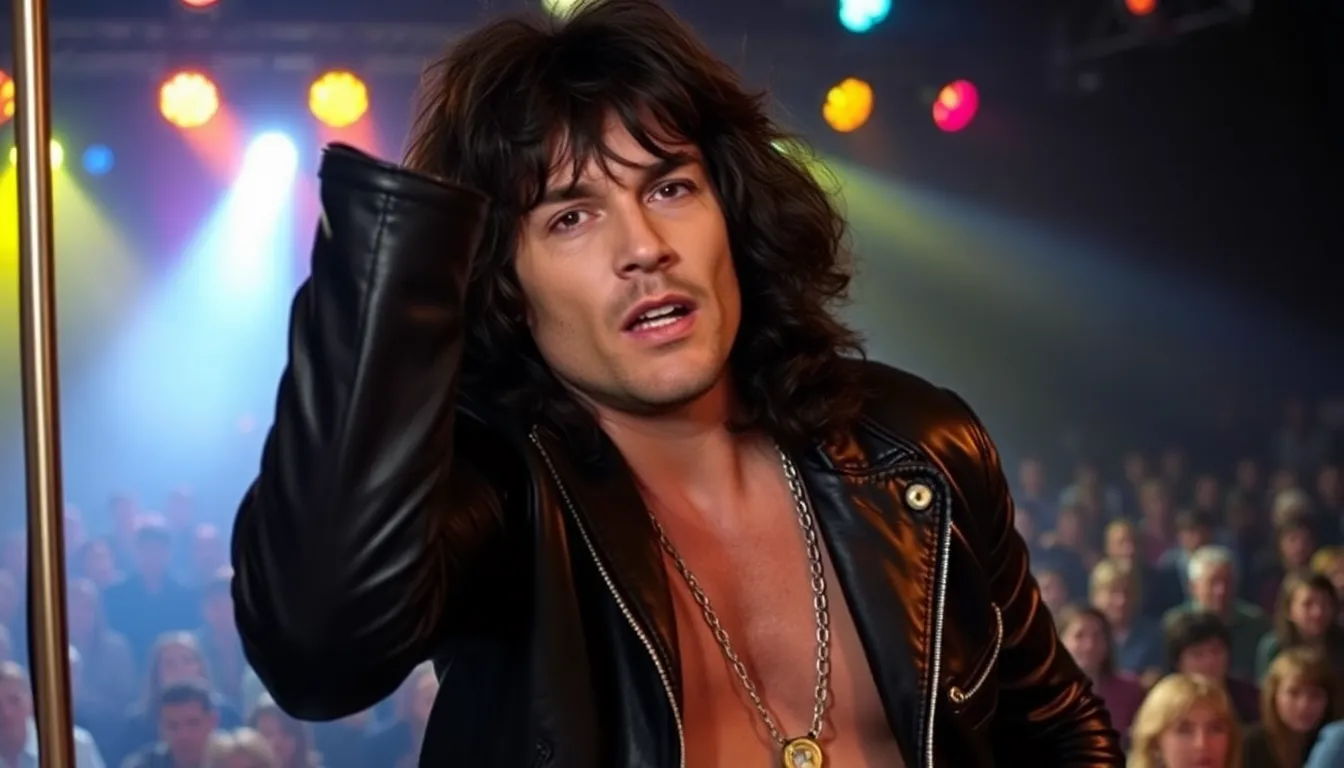In a world where biopics often miss the mark, Watch the Doors stands out like a leather-clad rock star at a symphony. This film dives into the chaotic life of Jim Morrison and his legendary band, capturing the essence of rebellion and creativity that defined an era. If you’ve ever wondered what it’s like to dance on the edge of madness while belting out iconic tunes, this film is a must-see.
With its blend of captivating performances and a soundtrack that’ll have you tapping your feet, Watch the Doors offers more than just a peek into the past. It’s a wild ride through the psychedelic 60s, where every moment is infused with the spirit of rock ‘n’ roll. So grab some popcorn and prepare for a cinematic experience that’s as electrifying as a Morrison performance—because who wouldn’t want to relive the magic of The Doors?
Table of Contents
ToggleOverview of Watch The Doors (Film)
“Watch The Doors” explores the life and times of Jim Morrison, the enigmatic frontman of the iconic band, The Doors. Set against the backdrop of the 1960s, the film delves into Morrison’s complex personality, highlighting his charisma and struggles. It effectively captures the era’s cultural shift, showcasing the rebellion and creativity that defined the music scene.
Directed by Oliver Stone, the film features powerful performances, particularly by Val Kilmer, who portrays Morrison with intensity and depth. The cast also includes Meg Ryan as Pamela Courson, Morrison’s long-time partner, adding emotional layers to the narrative. Stone’s direction emphasizes the chaotic lifestyle of the band, bringing their legendary concerts and behind-the-scenes moments to life.
The soundtrack stands out, featuring classic songs such as “Light My Fire” and “Riders on the Storm.” These tracks not only enhance the film’s atmosphere but also serve to remind viewers of The Doors’ lasting impact on rock music. Cinematic techniques, including vivid visuals and psychedelic motifs, reinforce the film’s exploration of art and counterculture.
Critical reception highlights both strengths and weaknesses. Some praise its authenticity and engagement with Morrison’s persona, while others point out historical inaccuracies. Ultimately, “Watch The Doors” serves as a compelling homage to Morrison’s life and the timeless influence of The Doors on music and pop culture.
Viewers seeking an immersive experience will find this film not only entertaining but a thoughtful reflection on an iconic figure in music history. Through its exploration of creativity, fame, and the dark side of celebrity, “Watch The Doors” resonates with anyone who’s ever felt the pulse of rock ‘n’ roll.
Plot Summary


“Watch the Doors” explores the life of Jim Morrison and his iconic band, The Doors. The film delves into the essence of rebellion and creativity within the 1960s rock scene, offering an engaging look at that transformative era.
Main Characters
Jim Morrison, portrayed by Val Kilmer, emerges as the film’s central figure. His charismatic yet troubled persona captivates audiences. Pamela Courson, played by Meg Ryan, acts as Morrison’s partner, providing emotional support while facing the chaos of his life. Other significant characters include Ray Manzarek, John Densmore, and Robby Krieger, who contribute to the band’s dynamic. The interplay among these characters highlights the complexities of fame and friendship within the music industry.
Key Themes
Rebellion stands out as a prominent theme in the film. Morrison’s persona embodies the spirit of defiance against societal norms. Creative expression drives the narrative, showcasing the band’s innovative approach to music. The film also addresses the impact of fame, revealing its dual nature—both exhilarating and destructive. Furthermore, the passage of time plays a crucial role, as it reflects on the fleeting nature of life and legacy within the rock and roll world.
Cinematic Techniques
Cinematic techniques in “Watch the Doors” create a vivid portrayal of Jim Morrison’s life and The Doors’ music. These methods include dynamic direction and distinctive cinematography that enhance the film’s storytelling.
Direction and Cinematography
Oliver Stone’s direction captures the tumultuous essence of the 1960s rock scene. Camera movements often mimic the chaotic energy of concerts, immersing viewers in the band’s experiences. Use of close-ups reveals emotional depth, particularly in Val Kilmer’s portrayal of Morrison. Cinematic choices such as lighting and color saturation evoke the era’s psychedelic atmosphere, making scenes visually striking. Steady transitions between live performances and personal moments maintain a compelling narrative flow, ensuring the audience stays engaged throughout.
Soundtrack and Musical Elements
The soundtrack serves as a critical component of “Watch the Doors.” Iconic songs from The Doors, like “Light My Fire,” anchor pivotal scenes, creating an authentic connection to the band’s legacy. Musical elements intertwine with dialogue, enhancing emotional impact and resonance. Sound design, including audience reactions during concerts, replicates the live experience, pulling viewers deeper into the story. By integrating various musical styles, the film emphasizes Morrison’s artistic innovations and highlights the cultural significance of their music.
Critical Reception
“Watch the Doors” received mixed reviews, with audiences captivated by its vivid portrayal of Jim Morrison and The Doors. Observations about the film often revolve around its authentic representation of the chaotic rock scene.
Audience Response
Viewers expressed a strong emotional connection to Morrison’s story, with many appreciating Val Kilmer’s performance. Fans of The Doors found the film resonant, feeling it captured the band’s energy and legacy. Some audience members noted the film’s depiction of the 1960s music culture was compelling. Despite mixed reactions, many others celebrated its artistic exploration of rebellion and fame.
Reviews from Film Critics
Critics highlighted the film’s cinematography and direction, praising Oliver Stone’s unique visual style. Some reviews pointed out that while the film effectively highlights Morrison’s persona, historical inaccuracies detract from its overall impact. Reviews often mention how the dynamic camera work immerses viewers in the band’s experience. Yet, several critics criticized the screenplay’s focus on melodrama, which overshadowed more profound themes. Overall, “Watch the Doors” sparked debate, both lauding its artistic merit and questioning its historical fidelity.
Cultural Impact
“Watch the Doors” significantly influenced popular culture and music history. The film highlighted Jim Morrison’s life and shaped perceptions of the 1960s rock scene. It served as an intriguing lens into the era’s spirit of rebellion and creativity. Audiences gained insights into The Doors’ impact on music and artistic expression.
Cynics noted the film’s historical inaccuracies but recognized its vibrant cultural representation. Critics praised the emotional intensity conveyed through dynamic cinematography and powerful performances. Val Kilmer’s portrayal of Morrison resonated with many, reviving interest in the musician’s legacy. Many viewers felt a renewed appreciation for The Doors’ classic hits.
Discussions around the film often focus on its exploration of fame and creativity. The narrative captures not only the exhilaration of success but also its darker consequences. This duality mirrors the complexities of artistic innovation during the 1960s. Fans of classic rock embraced the film, celebrating its authenticity and emotional depth.
Themes of friendship and conflict among band members further enrich its narrative. Characters like Ray Manzarek, John Densmore, and Robby Krieger showcase the challenges artists face in the spotlight. Conversations about the film often highlight how it reflects the tensions within creative partnerships.
“Watch the Doors” continues to inspire new generations. It influences aspiring musicians and filmmakers with its celebration of artistic spirit. Consequently, the film remains an enduring tribute to Jim Morrison’s life and The Doors’ transformative role in music. The lasting impact reveals itself through the ongoing interest in its themes, music, and cultural significance.



